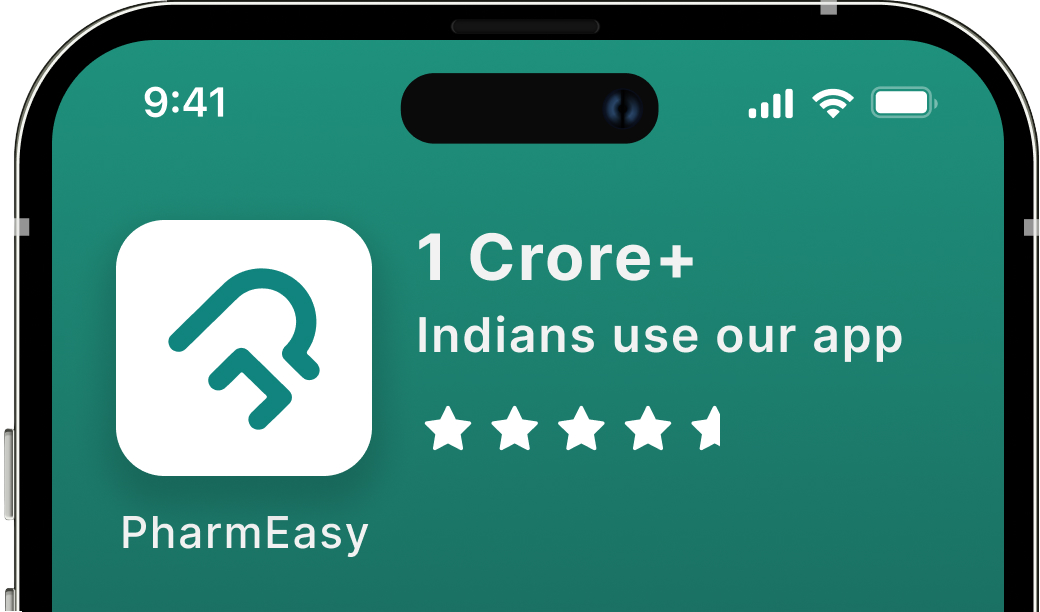Liraglutide: Uses, Dosage, Side Effects & Complete Patient Guide
By Dr. Vishesh Bharucha +2 more

Get,

to manage your symptom
Get your,


4 Cr+ families
benefitted

OTP sent to 9988776655



You’ve successfully subscribed to receive
doctor-approved tips on
Whatsapp

Get ready to feel your best.

Hi There,
Download the PharmEasy App now!!


Register to Avail the Offer
Send OTPBy continuing, you agree with our Privacy Policy and Terms and Conditions

Hi There,
Sign up on PharmEasy now!!
Trusted by 4 crore+ families

OTP sent to 9988776655



You have unlocked 25% off on medicines




Code: NU25
By Dr. Vishesh Bharucha +2 more
Table of Contents
Liraglutide is a medicine belonging to the group of GLP-1 receptor agonists (GLP-1 RA) typically used for management of diabetes. It works like the body’s natural hormone GLP-1, which helps lower blood sugar by increasing insulin reducing glucagon (a hormone that raises blood sugar), and slowing how quickly food leaves the stomach so sugar levels rise more steadily after meals. It also helps to reduce appetite. Because of these actions, it is useful for managing blood sugar in people with type 2 diabetes and for supporting weight management in individuals with obesity1,2.
This medicine is available in two brands: Victoza and Saxenda3,4. The U.S. FDA approved Victoza in 2010 for diabetes control, while Saxenda was approved in 2014 for weight management at a higher dose2.

In this blog, we will try to explain how liraglutide works, its recommended dosage, possible side effects, precautions, and helpful tips for its safe use.
Liraglutide is a prescription medicine approved for the following medical conditions:
Liraglutide works by copying the action of the GLP-1 hormone in the body. GLP-1 hormone has four main roles. It helps the pancreas release insulin when blood sugar is high. It reduces the release of another hormone called glucagon, which normally raises blood sugar. It slows down how food leaves the stomach so blood sugar rises more gradually after meals. It also acts on the brain to reduce appetite and give a feeling of fullness1,6.
Liraglutide medicine is almost 97% similar to the GLP-1 our body makes. This medicine attaches to special spots (receptors) not only on the pancreas but also in the gut and brain, which helps regulate sugar and appetite. On the pancreas, it encourages release of insulin and reduces glucagon. This lowers blood sugar and keeps it in the correct level. Importantly, this medicine does not make the body release too much insulin when sugar is normal or low.
It also acts on the brain, especially in areas like the hypothalamus and brainstem to reduce hunger and food intake7. It may increase the body’s sensitivity to leptin, the hormone that signals fullness, which helps give a feeling of satiety1,8. Another special feature of liraglutide is that it does not break down easily, so its effects last longer. Because of these effects, liraglutide helps manage blood sugar in diabetes patients and also supports weight loss in obese individuals1,9.
Liraglutide is commonly available under 2 brand names- Victoza and Saxenda. Even though they contain the same drug, they are used for different health conditions.
Victoza is used for people with type 2 diabetes. It helps to lower blood sugar levels when combined with healthy food choices and regular exercise. This medicine is not used for type 1 diabetes or for serious conditions like diabetic ketoacidosis. It is also not meant to be taken with insulin. People who had problems with the pancreas in the past need to be careful with it.
Saxenda is used to help manage body weight. It is given to adults who are overweight or obese, especially if they also have health issues like high blood pressure, diabetes, or high cholesterol. It works best when combined with a low-calorie diet and regular physical activity. Saxenda is not a treatment for type 2 diabetes and should not be taken with insulin or with similar medicines.
Victoza comes as an injection pen with doses such as 0.6 mg, 1.2 mg, or 1.8 mg. While Saxenda also comes as an injection pen, it comes as Liraglutide doses ranging from 0.6 mg up to 3 mg. Both are usually started at a low dose of 0.6 mg and then Victoza is gradually increased to 1.2–1.8 mg for diabetes but Saxenda may be given till 3 mg for weight management3,4.
Liraglutide is sold under different brand names and is available in many countries across the world.
Recently, the US FDA has approved a generic liraglutide version for treating type 2 diabetes with diet and exercise. It’s the first generic Liraglutide and only the second GLP-1 receptor agonist allowed as a generic. This aims to improve the accessibility and affordability of this medication for a wider population17.
The liraglutide dosing is different depending on whether it is used for diabetes management or for weight management.
The medicine is available as liraglutide injection pens. It is injected under the skin, usually in the stomach, thigh, or upper arm, and should not be injected into a vein or muscle. To avoid swelling or small lumps, the liraglutide injection site should be changed each time. The injection is to be taken once daily at about the same time, following doctor’s instructions. It is important to follow the step-up schedule carefully and not take it more than prescribed4,5.
If a liraglutide dose is missed, the next dose can be taken as per usual schedule on the following day. There is no need to take an extra dose to make up for the missed one. If the medicine is missed for 3 days or more, doctor should be consulted before restarting the treatment. He may restart from the lower starting dose (0.6 mg) and gradually increase again to avoid stomach-related side effects.
In case of an overdose of liraglutide, symptoms such as severe nausea and vomiting may occur. It can also lower blood sugar (hypoglycaemia), especially if taken along with other medicines that reduce blood sugar, such as insulin or sulfonylureas. If this happens, seek medical help immediately. If after taking the medicine a patient collapses, has a seizure, has trouble breathing, or does not wake up, they must be taken to the hospital without delay4,5.
Some patients taking liraglutide injection may experience mild side effects, including:
Changes in blood sugar may also be noticed, though this is uncommon when liraglutide is taken alone. The risk of low blood sugar increases mainly when combined with other medicines like insulin or sulfonylureas. Signs of low blood sugar (hypoglycaemia) can include:
Some Liraglutide side effects are serious and need immediate medical attention. These include:
These are red flag symptoms that require urgent attention. Always contact your doctor if you notice anything unusual while using liraglutide3,4.
Liraglutide should not be used in individuals:
Tell your doctor before using liraglutide if you have:
Liraglutide may slow stomach emptying, which can affect how oral medicines work. Most medicines are not affected by liraglutide, but some, like digoxin, lisinopril, paracetamol, and birth-control pills, may have small changes in how they are absorbed. For this reason, doctors may adjust the timing of these medicines so that they do not interfere with each other1.
When liraglutide is taken together with other anti-diabetic medicines such as sulfonylureas, there is a risk of lowering blood sugar too much, which is called hypoglycaemia. Liraglutide can be used with sulfonylureas or insulin, but the dose of these medicines may need to be reduced, and blood sugar should be monitored carefully3.
It is best to limit or completely avoid alcohol while using liraglutide. Liraglutide itself does not directly interact with alcohol, but people with diabetes who also use insulin or sulfonylureas may face a higher risk of low blood sugar when they drink. Alcohol can also increase the risk of pancreatitis, which makes it unsafe for people taking liraglutide19,20.
When taking liraglutide, it’s important to follow proper certain lifestyle and dietary changes. These include:
Taking the medicine along with following a proper diet and exercise helps achieve better results.
When using liraglutide injection, these instructions for proper storage and handling must always be followed:
Also Read: Everything to Know About GLP-1 Receptor Agonist and Its Role in Weight Management
Liraglutide is a GLP-1 receptor agonist that helps manage blood sugar in type 2 diabetes and supports weight control in adults with obesity. This injection should be used safely by following the doctor’s prescribed dose, proper injection technique, along with recommended lifestyle changes. Always work closely with your doctor for personalised dosage and monitoring. Do not adjust the dose on your own, and report severe abdominal pain (possible pancreatitis), continuous vomiting, swelling in the neck (possible thyroid issue), or any other unusual side effects of liraglutide promptly to ensure your treatment is safe and effective.
Liraglutide is pronounced “leer-a-gloo-tide.” Break it into parts: leer – a – gloo – tide for correct pronunciation5.
Yes, liraglutide is safe for long-term use, even up to five years, with studies showing sustained blood sugar and weight control in diabetic and overweight patients24.
Victoza is approved to manage blood sugar in type 2 diabetes, given in doses of 0.6 to 1.8 mg daily, while Saxenda is used for weight loss in overweight or obese adults, in doses of 0.6 to 3 mg. Both contain liraglutide as the main active ingredient2,3,4.
If liraglutide is prescribed for diabetes, the doctor may ask you to get sugar tests and an HbA1c test, which shows your average sugar over 2–3 months. Sometimes, you may also be asked to check your sugar at home.
When liraglutide is prescribed only for weight management, the doctor may focus more on checking your heart rate and weight regularly5.
Disclaimer: The information provided here is for educational/awareness purposes only and is not intended to be a substitute for medical treatment by a healthcare professional and should not be relied upon to diagnose or treat any medical condition. The reader should consult a registered medical practitioner to determine the appropriateness of the information and before consuming any medication. PharmEasy does not provide any guarantee or warranty (express or implied) regarding the accuracy, adequacy, completeness, legality, reliability or usefulness of the information; and disclaims any liability arising thereof.
Comments

Leave your comment...
You may also like
Comments